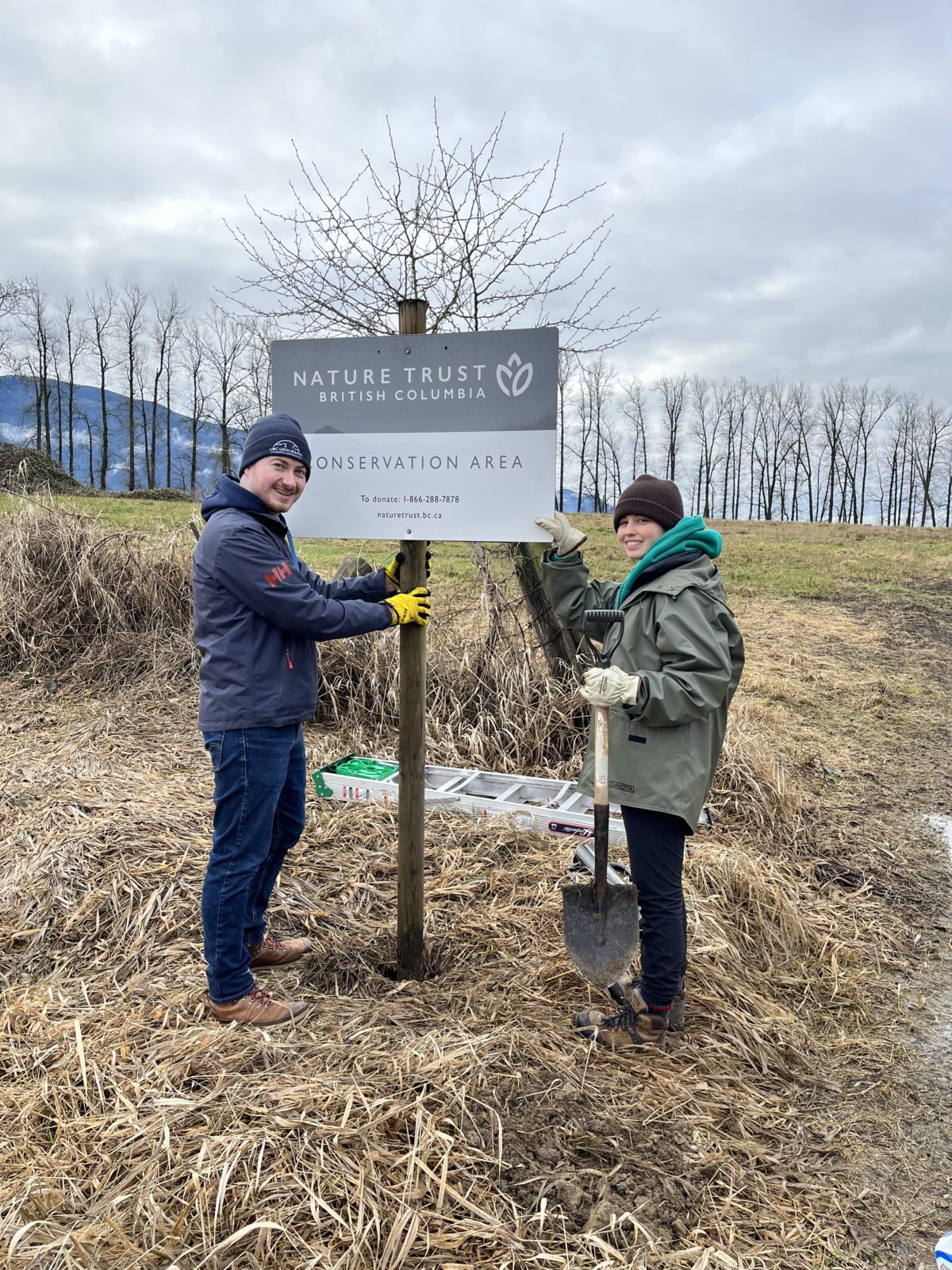
There isn’t a normal day when you’re working with The Nature Trust’s Conservation Field Crews. Each day offers a new adventure and new experiences. One will never do the same thing twice, even in what seems to be a mundane conservation area. This was the case when I, a member of our communications team, joined the South Coast Crew for an average day of work at The Nature Trust’s Nicomen Slough conservation area, located just outside Chilliwack.
The day started painfully early, with a 7:45 AM meeting time at The Nature Trust’s Vancouver storage locker. After picking up equipment and a brief visit to Lowe’s for supplies, we hit the road bound for Nicomen. The drive took a couple hours, and we arrived at the base of cloud-shrouded Nicomen Mountain at about 10 AM. The previous day had been rain-soaked and we were prepared for a wet experience, but luckily the clouds were high and the mountains exposed to blue sky, creating some beautiful workplace scenery.
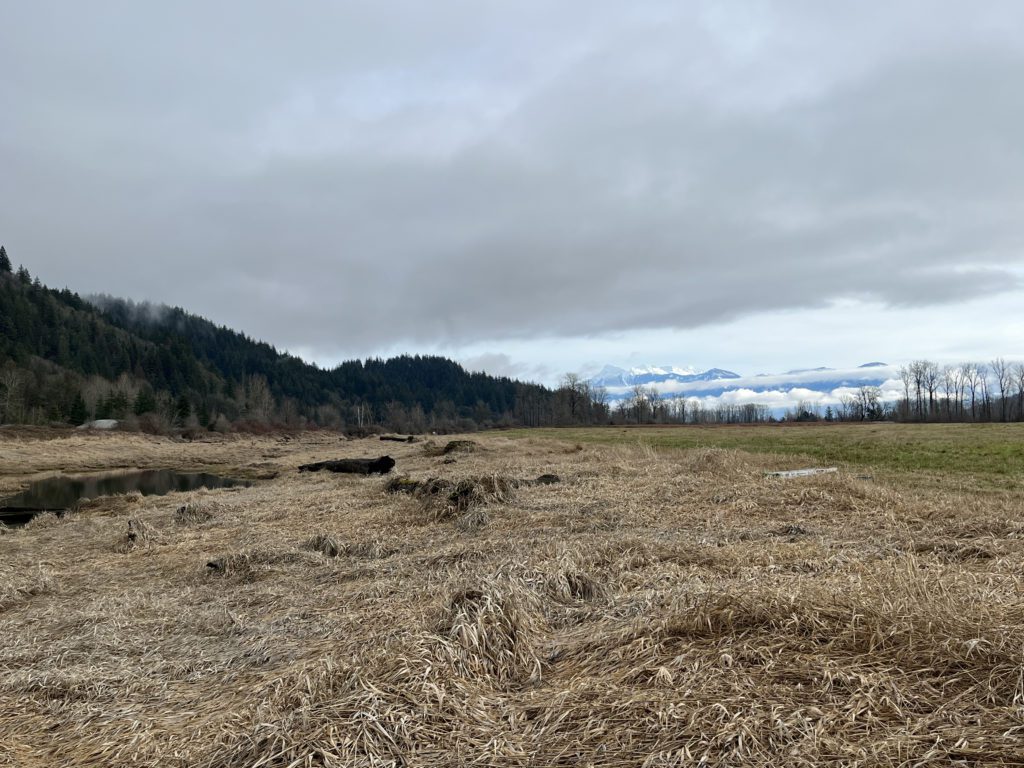
The three of us – myself, outgoing Field Operations Technician Sam, and Crew member Clare – had a long list of tasks, so we got to work immediately. First up, moving a Nature Trust sign to prevent it from sinking into the mud. To do this, we had to dig a small hole on higher ground and move the sign there. We brought instant cement to set it in place, but soon realized that the chilly January conditions were too cold for it to set! Luckily, the clay-rich mud proved sufficient to pack the sign into place instead.
We then trekked across the conservation area to move a bird nesting box from the slough’s banks to higher ground. This required the same procedure as the sign, but also required inspecting the inside of the box to make sure it was clean and devoid of birds and eggshells. Fortunately, all checked out, and we moved the box to a better vantage point for migratory birds.
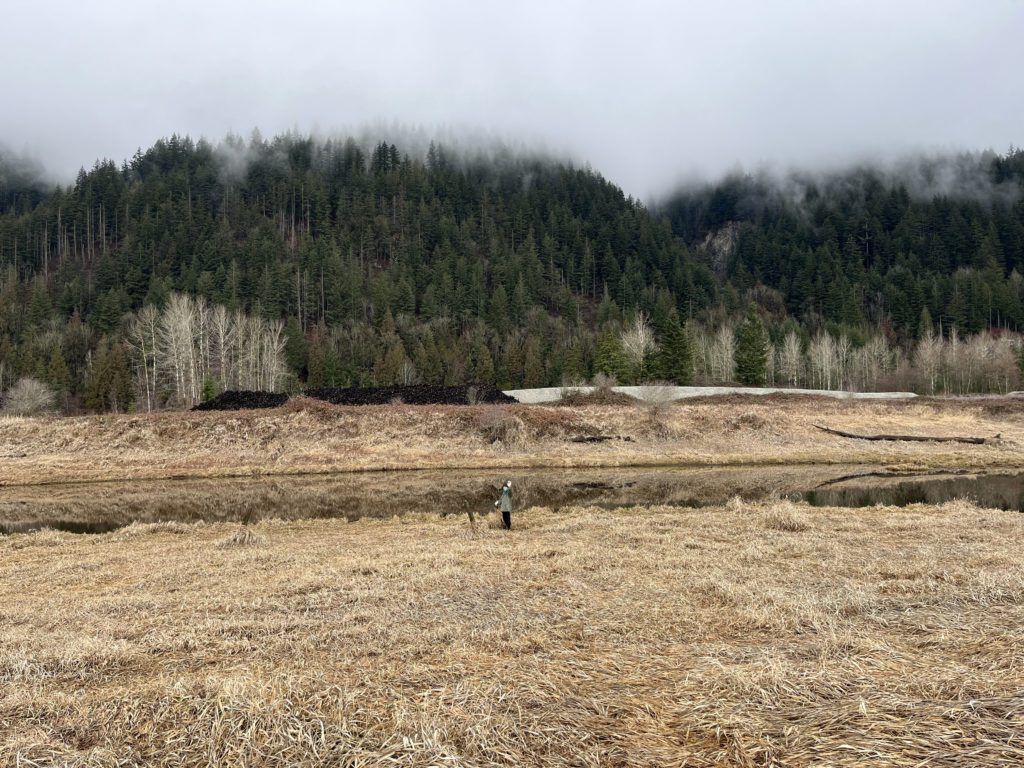
After a short lunch break, it was time to map invasive species. Unfortunately, Nicomen Slough is rife with invasive plants. Composed of former hay and blueberry fields, there is lots of disturbed land for invasive species to occupy. Invasive Canary grass lines the waterfront, and the old crop fields have sporadic clumps of Himalayan Blackberry. Invasive plants impede restoration efforts, including the Crew’s recent work to plant waterfront willow trees at Nicomen.
Today, we just focused on mapping the clumps of Blackberry. This meant walking through the old blueberry fields and looking for Blackberry stems. Once we found them, we slowly used mapping software to chart their perimeters, so that the plants can be properly removed at some point this spring. We mapped for quite a while, until the task became a race against time; the cold air was draining our tablet’s battery. We mapped as much as we could, but the device died before we finished.
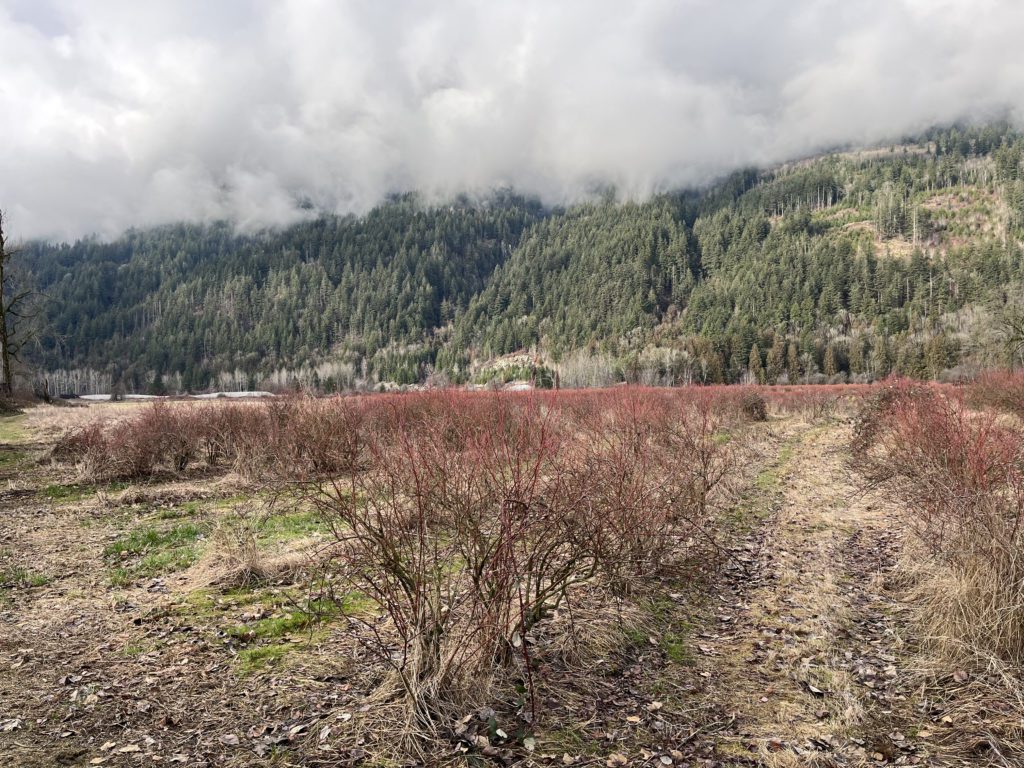
With tablet access gone, there was little left to do except walk the land and pick up garbage. We found all kinds of stuff lying in nooks and crannies, from old farm piping to chunks of marble countertop to coffee cups. We also found interesting pieces of nature, like an old hummingbird nest and a pond with the potential to house amphibian egg masses!
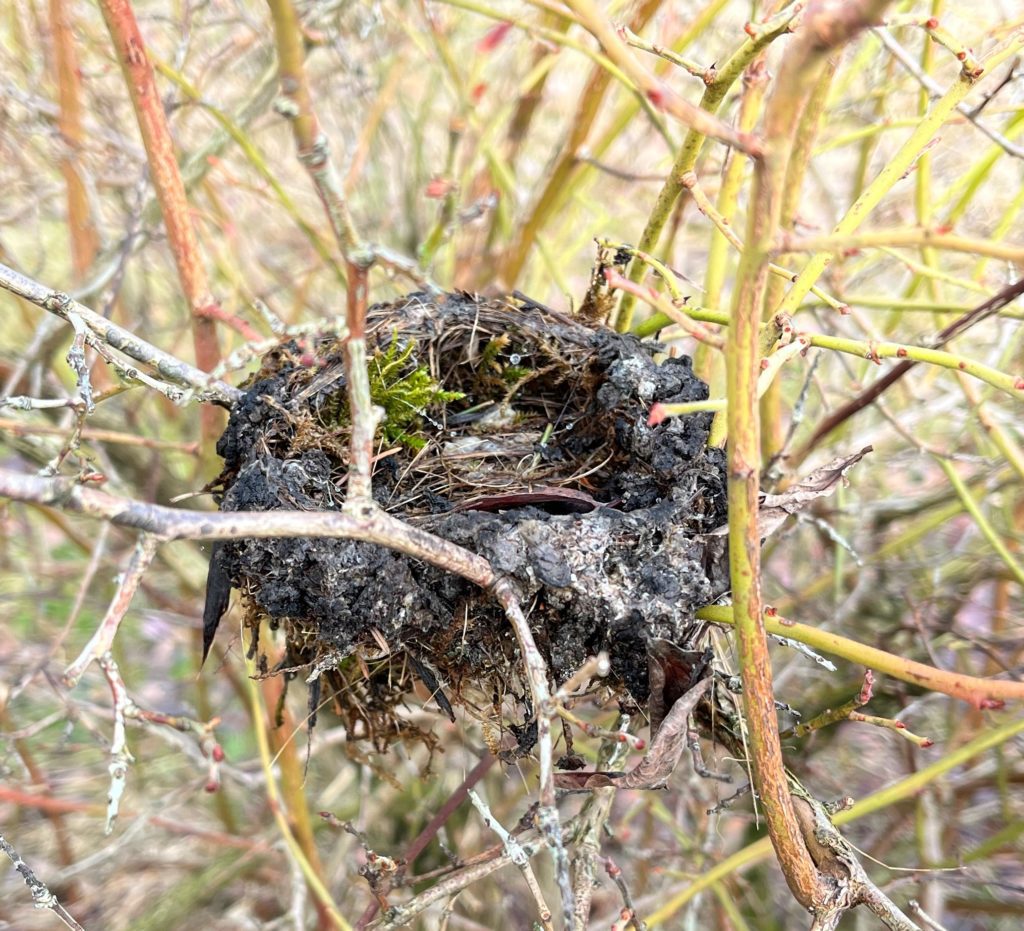
The day was nearly done at this point, so we hopped back into the car and drove back to Vancouver. In the end, this “normal” day with the Crew ended up being a mighty fun experience full of unpredictable twists and turns. I can’t wait to join the Crew again for another day in the trenches!
